
Transformations Mathematics Instructional Plan
- Subject:
- Mathematics
- Measurement and Geometry
- Material Type:
- Lesson Plan
- Provider:
- VDOE
- Author:
- VDOE
- Date Added:
- 10/07/2024

Transformations Mathematics Instructional Plan

Constructions Mathematics Instructional Plan

How Many Triangles? Mathematics Instructional Plan

Similar Triangles Mathematics Instructional Plan

Take Me Out to the Ball Game Task Template, Student Version of Task, Anchor Pages and Scoring Rationale

The Pythagorean Relationship Mathematics Instructional Plan

Special Right Triangles and Right Triangle Trigonometry Mathematics Instructional Plan

Properties of Quadrilaterals Mathematics Instructional Plan
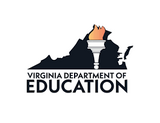
Counting to 10, identifying numeralsMathematics Instructional Plans (MIPs) help teachers align instruction with the Mathematics Standards of Learning (SOL) by providing examples of how the knowledge, skills and processes found in the SOL and curriculum framework can be presented to students in the classroom.

Dan Meyer has created many mathematics lessons centered around storytelling, along with a methodology for using these with students. Before you do any of his lessons, please see the explanation at his blog: https://blog.mrmeyer.com/2011/the-three-acts-of-a-mathematical-story/ To see all the lessons in a Google Docs spreadsheet, go to https://docs.google.com/spreadsheets/d/1jXSt_CoDzyDFeJimZxnhgwOVsWkTQEsfqouLWNN
C6Z4/edit#gid=0
The lessons are all CC BY, and you may edit these to fit your own students’ needs. The links from #GoOpenVA go to his own website because the structure of the lessons (including pertinent videos) is integral to the delivery of the lessons. Some lessons are stored as downloadable zip files, and these are noted as part of the link.
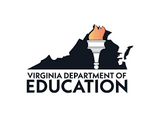
Science Instructional Plans (SIPs) help teachers align instruction with the Science Standards of Learning (SOL) by providing examples of how the content and the scientific and engineering practices found in the SOL and curriculum framework can be presented to students in the classroom.
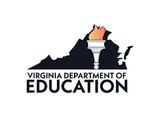
English Instructional Plan –Generating Questions for Research K-1
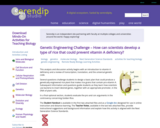
"Genetic Engineering Challenge - How can scientists develop a type of rice that could prevent vitamin A deficiency?" is an analysis and discussion activity. This activity begins with an introduction to vitamin A deficiency, rice seeds, and genetic engineering. Next, several questions challenge students to design a basic plan that could produce a genetically engineered rice plant that makes rice grains that contain pro-vitamin A. Subsequent information and questions guide students in developing an understanding of the basic techniques of genetic engineering. Students use fundamental molecular biology concepts as they think about how to solve a practical problem. This activity can be used to introduce students to genetic engineering or to reinforce basic understanding of genetic engineering.

5E model lesson covering genetic engineering tools and technologies.

In this activity, students will explore some of the common uses of DNA information in better understanding one’s ancestry and in making more informed health decisions. Life science students have learned that DNA provides the instructions for making proteins, and those proteins have a great deal to do with a person’s physical and mental characteristics as well as their likelihood of suffering from certain medical conditions. At the same time, companies like Ancestry.com and 23andMe advertise a DNA analysis service through which – for a nominal fee – they reveal hidden information about a person’s heritage and predisposition toward certain diseases.

This activity begins with sections that help students to understand basic principles of genetics, including (1) how genotype influences phenotype via the effects of genes on protein structure and function and (2) how genes are transmitted from parents to offspring through the processes of meiosis and fertilization. Then, a coin flip activity models the probabilistic nature of inheritance and Punnett square predictions; this helps students understand why the characteristics of children in many real families deviate from Punnett square predictions. Additional concepts covered include polygenic inheritance, incomplete dominance, and how a new mutation can result in a genetic condition that was not inherited. This activity helps students meet the Next Generation Science Standards.

These lessons demonstrate how a good understanding of mitosis, meiosis and fertilization and a basic understanding of the roles of DNA and proteins can provide the basis for understanding genetics. Important genetics concepts for students to learn are summarized and multiple learning activities are suggested to help students understand Punnett squares, pedigrees, dominant/recessive alleles, X-linked recessive alleles, incomplete dominance, co-dominance, test crosses, independent assortment, genetic linkage, polygenic inheritance, etc. This overview provides links to suggested activities which include hands-on simulation and laboratory activities, analysis of class data, review games and discussion activities and questions.

This Jeopardy game reviews genetics, with 25 questions of varying levels of difficulty.

This game helps students to enjoy reviewing genetics vocabulary. Each card in the deck has a target vocabulary word and two related taboo words that the student may not use when giving clues so the other students in his or her small group can guess the target word. Many students have trouble learning the substantial new vocabulary required for biology, and this game lets students have fun while reinforcing their understanding of key terms.
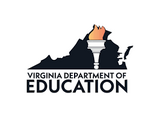
Science Instructional Plans (SIPs) help teachers align instruction with the Science Standards of Learning (SOL) by providing examples of how the content and the scientific and engineering practices found in the SOL and curriculum framework can be presented to students in the classroom.